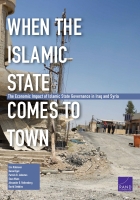By George Friedman
I spent the past two weeks in Canada, north of a town called Nelson in British Columbia. One evening, while nearing sleep, I heard a rumbling that sounded like a train. In the morning, I woke and people were taking about an enormous fireball that had passed overhead. The rumbling had been the result a meteor crashing to Earth.
A bit later, I headed out for a hike. The country north of Nelson was beautiful and very lightly inhabited. That morning it was covered with what seemed like a thick and eerie mist. It was in fact the result of massive forest fires that had ravaged British Columbia.
Where I was, I had a sense of both extremes that nature presents in Canada and also its loneliness. A meteor could fall and not disturb anyone. I had been to Canada many times before, but always in the south. Here I got a sense of loneliness that I had never quite experienced in the United States. The roads were sparse, as were the people. It was that loneliness amid beauty that riveted me. I have, of course, visited most major Canadian cities and they are simply cities, as inviting and confining as most. Obviously, every country has the paradox between the rural and urban, but the first thing you notice about Canada is the profound division between human life and the absolute solitude of most of the country.
A Country Is Its People














